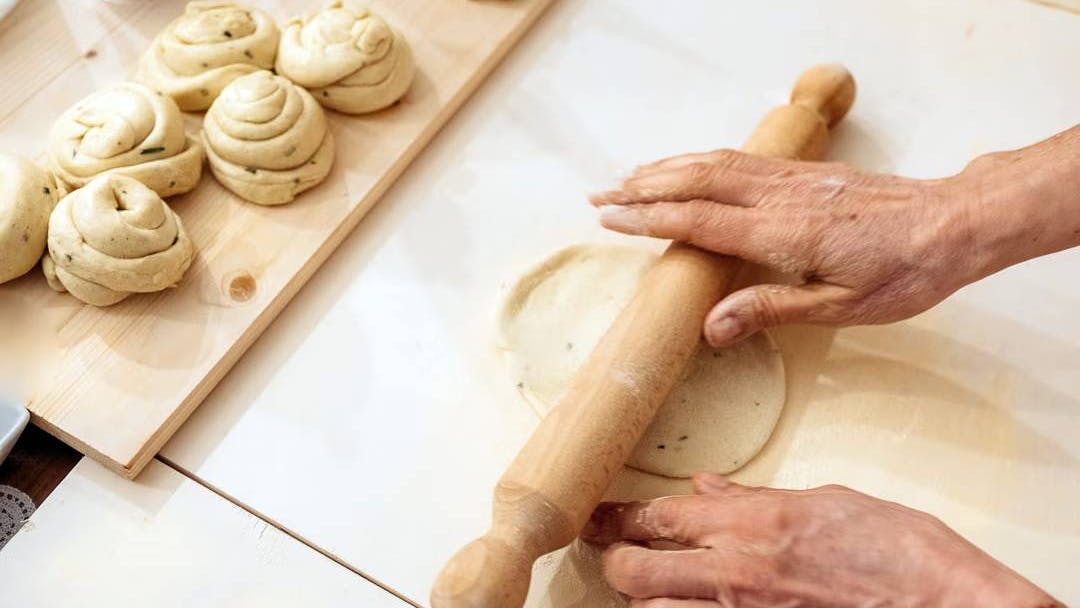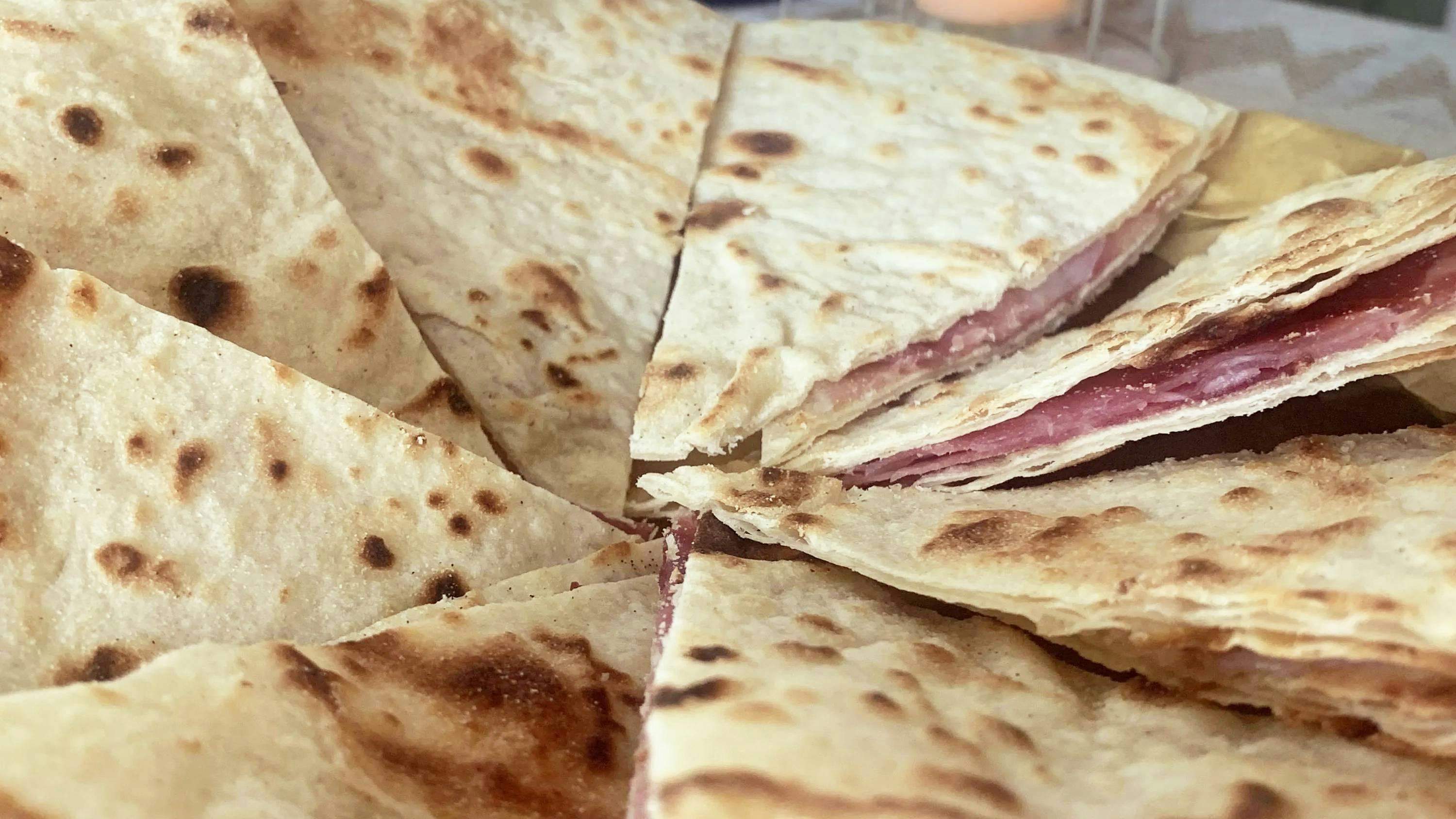

When you think of “Romagna”, you immediately picture piadina and the famous cassoni, two true culinary icons that evoke the scents of the sea and warm summer nights. But the world of piadina is much more diverse than you might imagine: each area has its own version, with variations that tell stories of family and ancient traditions. Today, we’re taking you to the Marche region, specifically to Pesaro, to discover an irresistible specialty: the piada sfogliata, also known as crescia sfogliata.
Easy and quick to prepare (and just as quick to devour because it’s simply that good), the piada sfogliata offers a fragrant, flaky alternative to the classic Romagna piadina. One of its secrets lies in the use of lard in the dough, giving it that crisp texture and extra flavor that can turn this simple bread substitute into a complete meal when generously filled!
As often happens with traditional recipes, the piada sfogliata also comes in many variations, passed down through generations and adapted to local tastes. Each family guards its own little secret for the perfect flaky texture, and our Cesarina Silvana from Pesaro is ready to share her special recipe and tips for achieving a perfect result!

“This is one of my favorite recipes. I was about six years old when my mother taught me all the steps, and it always felt like a celebration! I later tweaked our family recipe by adding re-milled durum wheat semolina to the flour to enhance the flavor and lightness”.

Experiences where piadina takes center stage
Before diving into Cesarina Silvana’s recipe, why not book one of the Cesarine experiences that celebrate this unique type of flatbread? Whether it’s the thin, wide version typical of Rimini or the thicker, smaller one from Ravenna, it’s sure to be delicious — and you’ll have fun finding your perfect filling, with nearly endless combinations to choose from!

Piadina Sfogliata (flatbread)
A classic from the Marche region, fragrant and irresistible
Ingredients
- 250 g type 1 flour
- 250 g re-milled durum wheat semolina
- 260 ml water
- 50 g lard (or extra virgin olive oil)
- 12 g salt
- Pepper to taste
Method
- Place the two flours, salt, pepper, and lard/oil in a bowl.
- Add the water and mix everything together with a fork.
- Then knead the dough with your hands until you get a smooth, homogeneous ball. Wrap it in plastic wrap and let it rest for about 10 minutes.
- Transfer the dough onto the work surface and divide it into 10 portions, each weighing about 80 g.
- Roll out each ball one at a time to a thickness of about 3 mm.
- Using the back of a spoon, spread the lard evenly or brush with oil.
- Roll up each sheet to form a spiral, then roll it out again with a rolling pin to a thickness of about 2 mm.
- Heat the griddle well and cook the piadine, making sure to rotate and flip them continuously to ensure even cooking: they should be golden and well-cooked, ready to be filled as you like (traditionally with wild herbs, seasonal roasted vegetables, local cured meats, and cheeses) and served hot.
A Little History of the Piadina
The first evidence of piada dates back as far as 1200 BC, though the first written record mentioning it appears in 1371. Born as a humble bread during times of famine, piadina remained a staple for the poorer classes for centuries. It wasn’t until the 20th century, with the introduction of corn flour making it more affordable, that it experienced a revival. In the 1940s and 1950s, as tourism flourished along the Romagna coast, piadina captured the hearts of visitors and holidaymakers alike, eventually becoming a beloved gastronomic symbol now even celebrated in fine dining restaurants.
